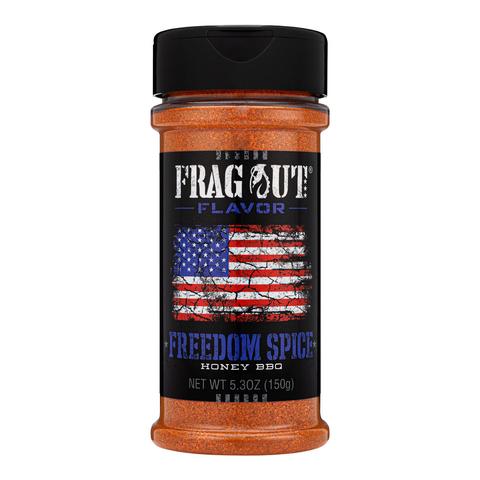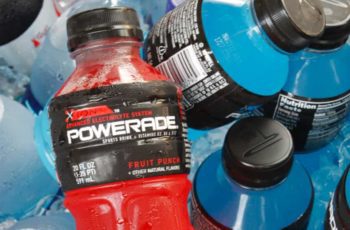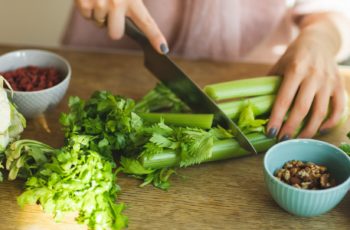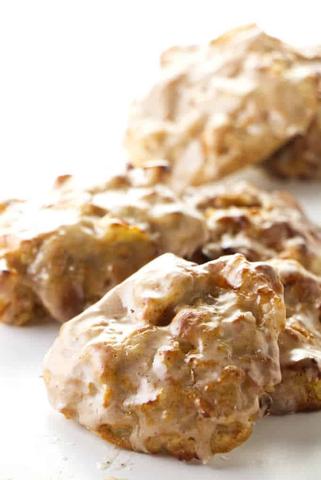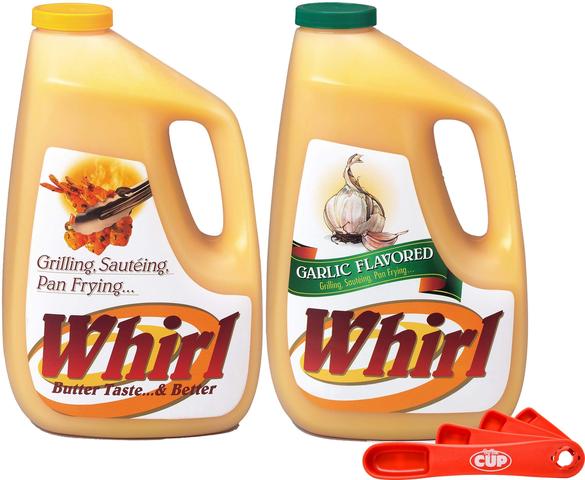
“Enhance the flavor and sizzle of your favorite dishes with our premium liquid butter for griddle. Perfectly crafted to add a rich, buttery goodness to pancakes, eggs, grilled sandwiches, and more. Experience the convenience and delectable taste with every pour – elevate your culinary creations to new heights!”
COOKING WITH BUTTER ON A BLACKSTONE GRIDDLE

Using butter on a Blackstone griddle can greatly enhance the flavor and color of your food. It adds an extra zing to dishes like burgers, tacos, and steaks, giving them a lip-smacking taste. Butter also prevents food from sticking to the griddle, making it easier to cook. However, it’s important to note that butter burns faster than oils, so it’s best to add a dollop of butter at the end of cooking to enhance the flavor without burning it.
When cooking on a Blackstone griddle, you have the option of using either butter or vegetable oils. While both have their pros and cons, butter adds more flavor and moisture to the food. Oils, on the other hand, are healthier options as they contain “good fats” that help keep cholesterol levels low. The amount of oil or butter needed depends on the type of meat being cooked.
To properly melt butter on a Blackstone griddle, cut a stick of butter into small pieces and transfer them to an iron pan. Place the pan on the griddle and allow the butter to melt. Once melted, you can grease the griddle surface with the melted butter or add it at the end for enhanced taste.
BUTTER VS. OTHER COOKING OILS ON A BLACKSTONE GRIDDLE
Using butter on a Blackstone griddle has several advantages compared to other cooking oils. Butter adds extra flavor and color to the food, making it more delicious. It also prevents the food from sticking to the griddle surface. However, butter burns faster than oils, so it is recommended to add a dollop of butter at the end of cooking for enhanced flavor.
While both butter and oils can be used on a Blackstone griddle, there are some differences to consider. Oils, especially those high in monounsaturated and polyunsaturated fats, are healthier options as they keep cholesterol levels low. However, using too much oil can make the food greasy and difficult to remove from the griddle.
To properly melt butter on a Blackstone griddle, cut a stick of butter into small pieces and place them in an iron pan on the griddle. Allow the butter to melt before greasing the griddle surface or adding it at the end of cooking.
When using butter on a Blackstone griddle, it is important to avoid common mistakes such as using large chunks of butter or cooking at high temperatures. These can lead to burnt food or flare-ups. Instead, use small portions of melted butter or liquid butter for best results.
In conclusion, using butter on a Blackstone griddle can enhance flavor and prevent sticking. While there are advantages and disadvantages compared to other cooking oils, it ultimately comes down to personal preference and understanding how to properly use butter on the griddle.
TIPS FOR USING BUTTER ON A BLACKSTONE GRIDDLE
1. Use small portions of butter: Since butter burns faster than oils, it is important to use small amounts when cooking on a Blackstone griddle. This will prevent the butter from burning and ruining your food.
2. Melt butter in a separate pan: To avoid sudden flare-ups and burnt food, melt the butter in a separate pan before adding it to the griddle. This will ensure that the butter is evenly distributed and doesn’t burn quickly.
3. Grease the griddle with melted butter: Instead of adding large chunks of butter directly to the griddle, grease the surface with melted butter using a brush or spatula. This will help prevent sticking and enhance the flavor of your food.
4. Add a piece of butter at the end: To enhance the flavor of your cooked food, add a small piece of butter at the end of cooking. This will give your dish a delicious finishing touch.
5. Be cautious with high temperatures: Butter has a low smoke point compared to cooking oils, so avoid using it at high temperatures on a Blackstone griddle. Stick to lower heat settings to prevent burning.
ADVANTAGES OF USING BUTTER ON A BLACKSTONE GRIDDLE
Using butter on a Blackstone griddle has several advantages. Firstly, it enhances the flavor and color of the meat, making your dishes more delicious and visually appealing. Butter adds a rich and creamy taste that cannot be replicated by oils.
In addition, when cooking with butter, the food does not appear as greasy as it would when using oils. Butter provides a smoother texture to the food without leaving an oily residue.
Furthermore, butter acts as a natural non-stick agent on the griddle surface. This makes it easier to cook foods without worrying about them sticking to the griddle.
DISADVANTAGES OF USING BUTTER ON A BLACKSTONE GRIDDLE
1. Butter burns faster than oils: One major disadvantage of using butter on a Blackstone griddle is that it has a lower smoke point compared to most cooking oils. This means that it can easily burn when used at high temperatures, resulting in a burnt taste and potentially ruining the dish.
2. Not a healthier option: Butter is not as healthy as vegetable oils as it contains water and milk proteins in addition to fat. While oils are enriched with “good fats” that help keep cholesterol levels low, butter does not offer the same health benefits.
3. Greasy residue: Unlike oils, butter can leave behind a greasy residue on the griddle surface. Since griddles do not have the option of removing excess oil or grease, this can lead to overly greasy food if not managed properly.
HOW TO PROPERLY MELT BUTTER ON A BLACKSTONE GRIDDLE?
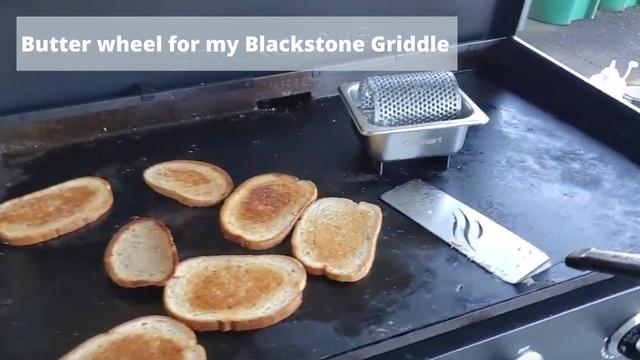
To properly melt butter on a Blackstone griddle, follow these steps:
1. Cut a stick of butter into small pieces.
2. Place an iron pan on the griddle and add the butter pieces to it.
3. Allow the butter to melt slowly on the griddle.
4. Once the butter has completely melted, you can either grease the griddle surface with it or add it to your dish at the end for enhanced flavor.
By melting the butter in a separate pan before adding it to the griddle, you can avoid sudden flare-ups and prevent your meal from burning. It is important to note that butter burns easily at high temperatures, so it is best to use liquid butter or clarified butter when cooking on a Blackstone griddle.
HOW TO CLEAN A BLACKSTONE GRIDDLE?
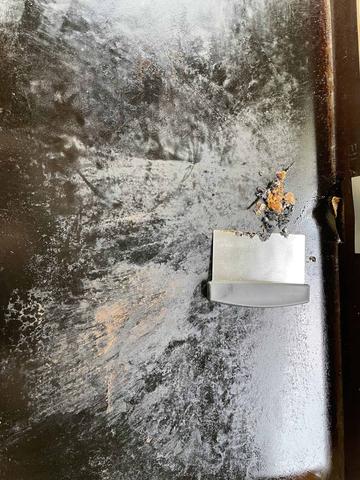
Cleaning a Blackstone griddle is an important step to maintain its performance and extend its lifespan. Here are the steps to effectively clean your Blackstone griddle:
1. Preparing the griddle: Before using the griddle for the first time, it is necessary to remove the factory coating. Use dish soap, a towel or rag, and warm water to thoroughly clean the griddle surface. Rinse off any soap residue and dry the griddle with paper towels.
2. Cleaning after cooking: After each use, it is essential to clean the griddle to prevent burnt food remnants and grease from solidifying. Avoid using dish soap as it is not effective in removing grease from the griddle surface. Instead, use more intense cleaning tools like a grill brush or scraper to scrape off any leftover food and grease.
3. Removing excess grease: Spray some water on the griddle surface and use paper towels to wipe away excess grease. Make sure to dry the griddle thoroughly with a towel after cleaning to prevent rusting.
4. Seasoning: Once the griddle is clean and dry, it is recommended to season it before storage or future use. Seasoning helps create a non-stick surface on the griddle and prevents rusting. Apply a thin layer of cooking oil or vegetable shortening on the entire surface of the griddle, including edges and corners.
By following these steps, you can keep your Blackstone griddle in optimal condition and ensure delicious meals every time you cook.
CLEANING BLACKSTONE GRIDDLE FOR THE FIRST TIME:
When cleaning a Blackstone griddle for the first time, it is important to remove the factory coating before use. This can be done by using dish soap and a towel or rag. Scrub the griddle surface thoroughly to ensure all residue is removed. After cleaning, it is recommended to dry the griddle with paper towels to prepare it for seasoning.
Cleaning a Blackstone griddle after cooking is essential to maintain its quality and prevent burnt food remnants from solidifying. It is not recommended to use dish soap for cleaning as it may affect the taste of the food. Instead, more intense cleaning tools should be used to remove grease and oil. Scrubbing the griddle surface with water and paper towels can help remove excess grease. It is also important to dry the griddle thoroughly after cleaning.
There are some common mistakes that should be avoided when cleaning a Blackstone griddle. These include using butter for seasoning, as it contains water and milk components that can damage the griddle surface. Cooking food directly in butter on a Blackstone griddle should also be avoided, as butter has a low smoke point and burns quickly. Additionally, it is important to dry the griddle surface thoroughly after cleaning to prevent any moisture from causing damage or rusting.
CLEANING A BLACKSTONE GRIDDLE AFTER USING BUTTER:
After using butter on a Blackstone griddle, it is important to clean it thoroughly to remove any grease and residue. Start by allowing the griddle to cool down slightly, but not completely. Use a griddle scraper to scrape off any excess butter or food particles from the surface.
Next, take a small bowl filled with warm water and add a few drops of dish soap. Soak a towel or rag in the soapy water and use it to scrub the griddle surface, ensuring that you remove all traces of butter. Pay special attention to any areas where butter may have burned or left residue.
Once you have scrubbed the griddle, rinse off any soap residue with clean water. Use paper towels to dry the griddle surface thoroughly, making sure there is no moisture left behind.
It is important to note that using dish soap alone may not be enough to remove all the grease from the griddle. If you find that there are still stubborn grease spots, you can use more intensive cleaning tools such as degreasers or grill cleaners specifically designed for flat-top grills.
By properly cleaning your Blackstone griddle after using butter, you can maintain its performance and prevent any build-up of grease that could affect the taste and quality of your food.
COMMON MISTAKES TO AVOID WHEN USING BUTTER ON A BLACKSTONE GRIDDLE:
1. Adding large chunks of butter: It is important to use small portions of butter on the griddle, as they burn quickly. Avoid adding large chunks of butter, as it can result in uneven cooking and burnt food.
2. Not melting the butter before adding it to the griddle: To avoid sudden flare-ups and prevent your meal from turning into a burnt mess, melt the butter in a separate pan before adding it to the griddle. This allows for better control over the heat and prevents burning.
3. Using butter at high temperatures: Butter has a low smoke point compared to cooking oils, making it unsuitable for cooking at high temperatures on a Blackstone griddle. Avoid using butter when cooking meals that require high heat to prevent burning.
4. Not using liquid butter: Liquid butter works best on Blackstone griddles and acts similar to olive oil. Use liquid butter to grease your griddle before cooking to prevent sticking and enhance flavor.
5. Overusing butter: While butter adds flavor and moisture to dishes, it is important not to overuse it as it can make food overly greasy and unhealthy. Use a small amount of butter or add it at the end of cooking for enhanced flavor without excessive greasiness.
HOW TO ENHANCE FLAVOR AND MOISTURE WITH BUTTER ON A BLACKSTONE GRIDDLE?
Using butter on a Blackstone griddle can greatly enhance the flavor and moisture of your food. Here are some tips to help you achieve the best results:
1. Use butter as a finishing touch: Instead of cooking your food directly in butter, add a small piece of butter at the end of cooking. This will give your dish a burst of flavor and help retain moisture.
2. Melt the butter separately: To avoid flare-ups and burnt food, melt the butter in a separate pan before adding it to the griddle. This way, you can control the heat and prevent any sudden burning.
3. Use clarified butter: Clarified butter, also known as ghee, has a higher smoke point than regular butter. It is prepared by removing water and milk content from regular butter, leaving only pure fat. This makes it ideal for cooking at high temperatures on a Blackstone griddle.
4. Grease the griddle with butter: Before you start cooking, lightly grease the griddle surface with a small amount of melted butter. This will prevent sticking and add extra flavor to your food.
5. Experiment with different dishes: Butter works well with various dishes on a Blackstone griddle, such as pancakes, scrambled eggs, French toast, and caramelized onions for burgers. The creamy texture and rich taste of butter can take these dishes to another level.
By following these tips, you can enhance the flavor and moisture of your food when using butter on a Blackstone griddle.
In conclusion, liquid butter is a convenient and versatile option for griddle cooking. Its smooth consistency allows for easy spreading and even cooking, while adding a rich and delicious flavor to your dishes. Whether you’re making pancakes, French toast, or grilled sandwiches, using liquid butter on the griddle enhances the taste and texture of your food. With its convenience and excellent results, liquid butter is a must-have ingredient for any griddle enthusiast.
Learn More About Grilling
If you want to learn more about grilling, check out these other helpful resources!

